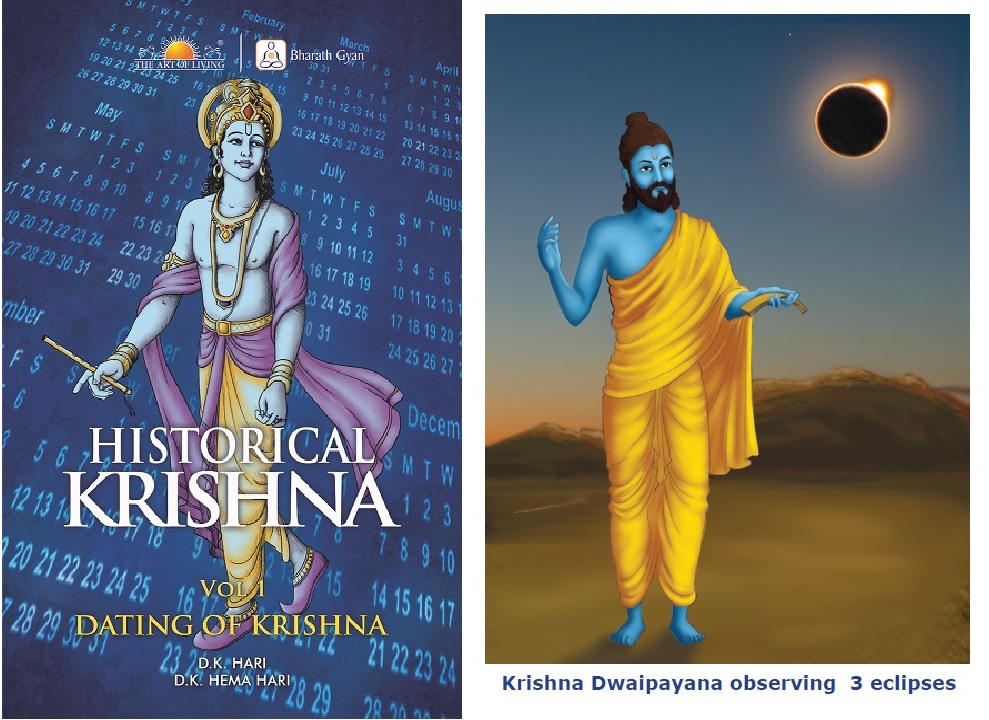Lunar eclipses occur only on Full Moon & Solar eclipses occur only on New Moon. Eclipses by nature, do not occur on every Full Moon or New Moon. Generally in a year, there occur around 5 to 6 eclipses & not all r usually visible from same place.

In the particular eclipse sequence that occurred then, Krishna Dwaipayana observes that not only is it a triple eclipse, but one of the eclipses in the series, was occurring within a gap of just 13 days.
Krishna Dwaipayana explains in detail the occurrences of the 3 eclipses in a month & expresses amazement as well as apprehension at the same.
1. a lunar eclipse,
2. followed by a solar eclipse,
3. then followed by another lunar eclipse,
all in one month.
We also find specific data on the astronomical position of each of these eclipses.
• 2nd occurrence of the eclipse in the sequel, is the Solar eclipse which is described as having occurred near the nakshatra Jyeshta, the star Antares.
in the nakshatra Margashira, a group of stars, in the Orion
constellation.
It was also a paksha of 13 days with an eclipse at either end.
• Equinox near star, Jyeshta
• A Triple eclipse sequence
• Solar eclipse only at that particular star, Jyeshta & not
anywhere in the sky
• Solar eclipse flanked by 2 lunar eclipses
• 13 days prior to 2nd lunar eclipse was a solar eclipse
Gregorian and the Indian calendrical systems.
and the Nakshatra at sunrise is taken as the Nakshatra for the day.












